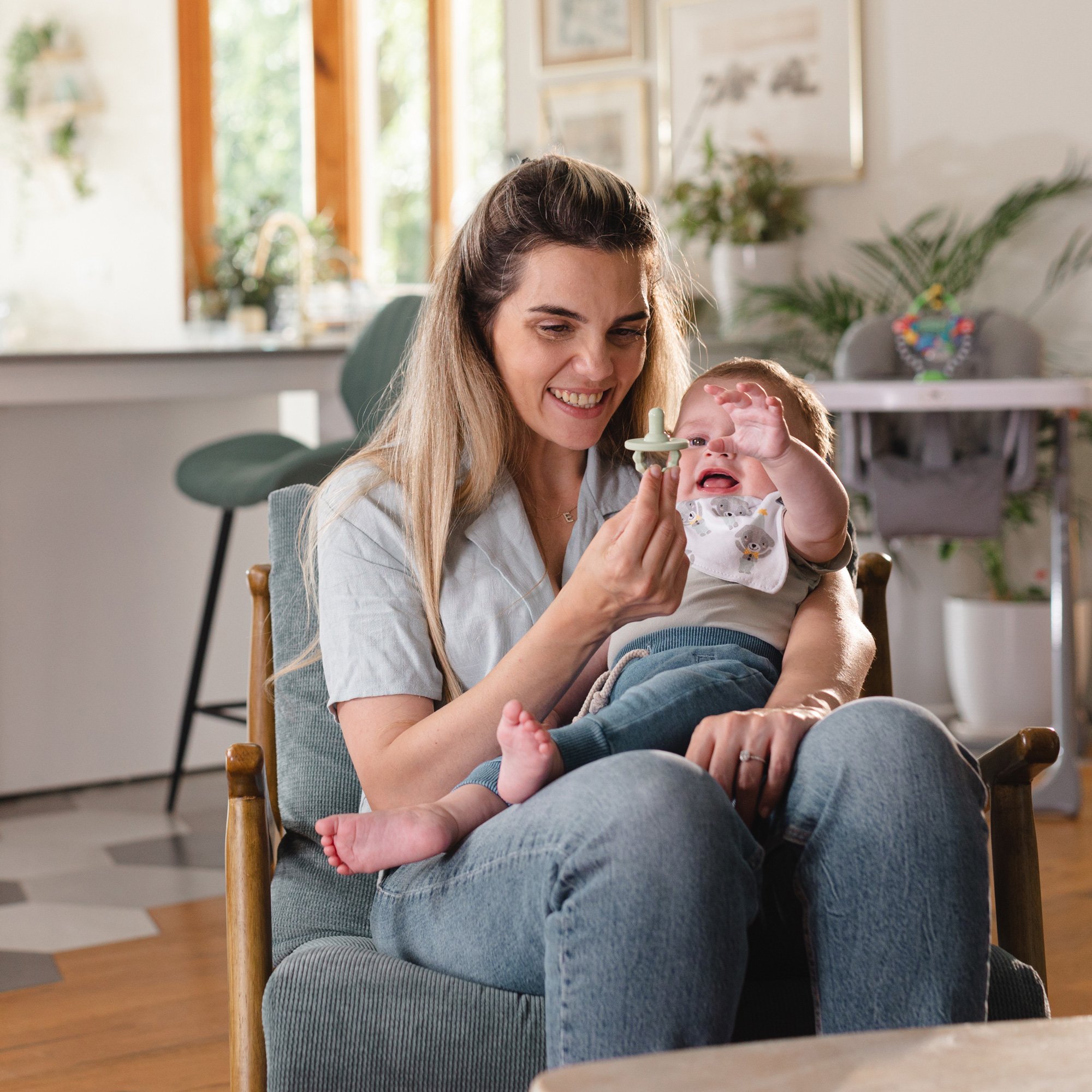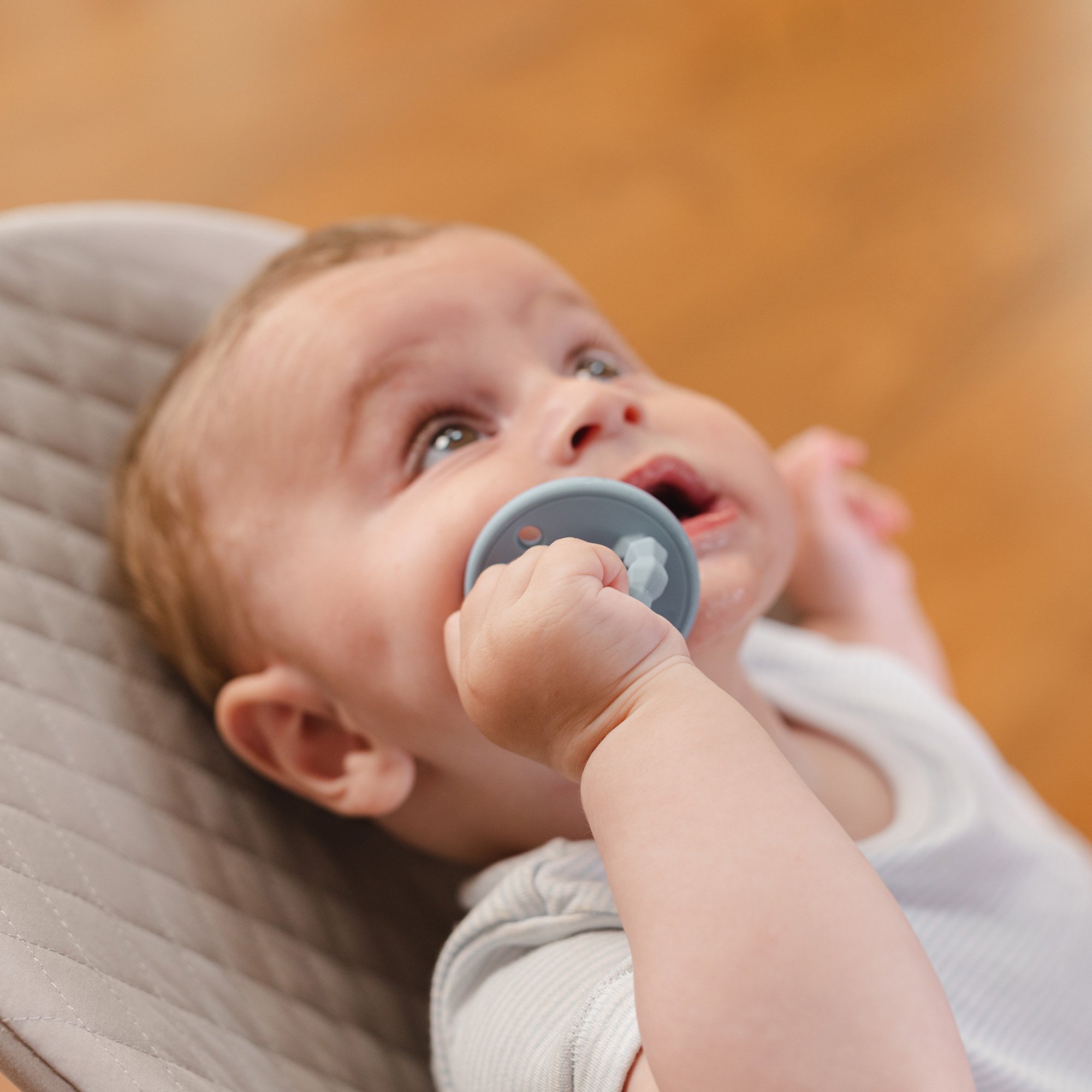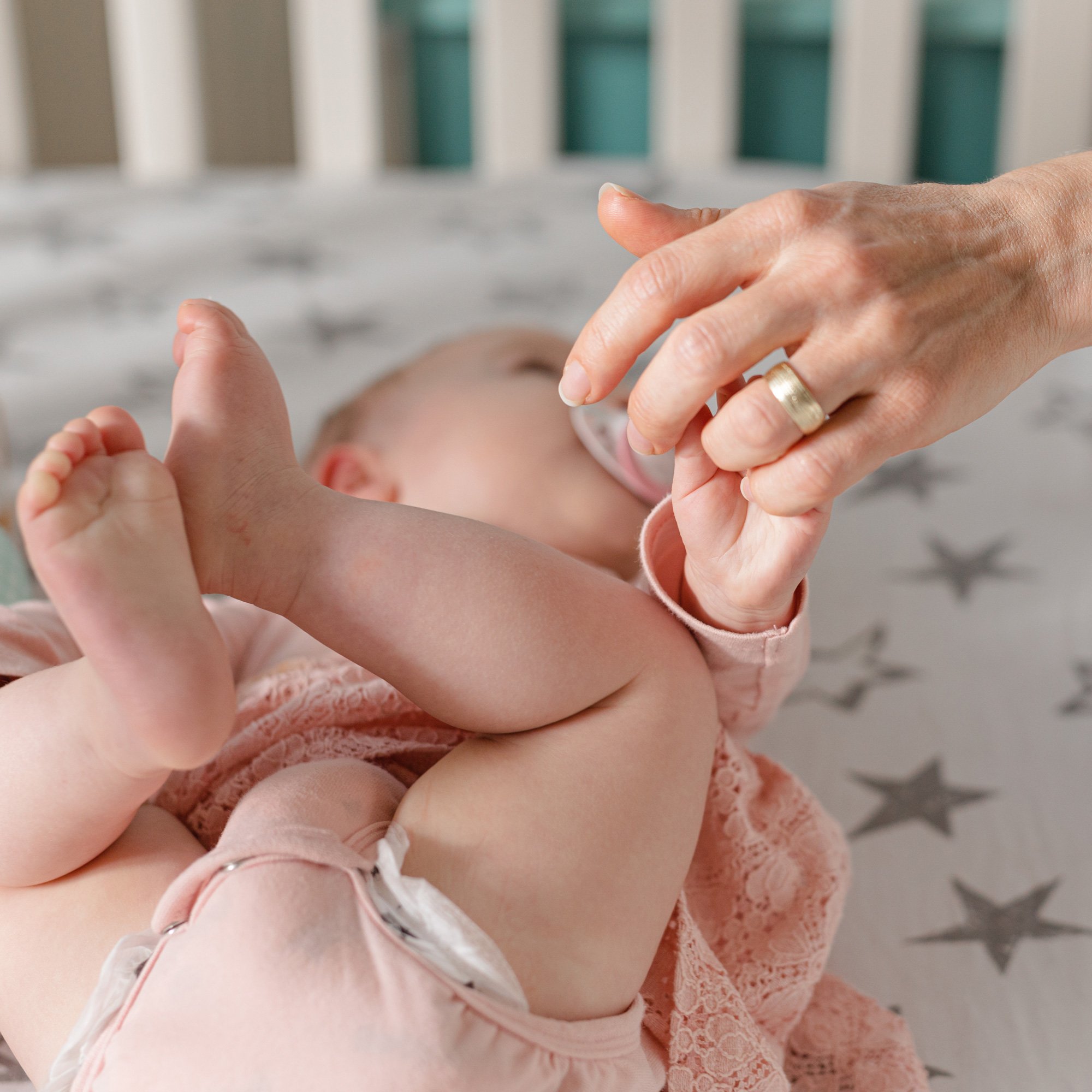If you’re a new parent finding it tricky to settle a crying baby, pacifiers will be a lifesaver. Designed to soothe and calm even the fussiest little ones, pacifiers are used all over the world to help comfort children. But, with so many different types of pacifiers available, how do you know which one will be right for your baby?
Keep reading to find out how to choose the right pacifier type, from the size and shape to your child’s age.

When to start using a pacifier
Giving your baby a pacifier will depend on whether they’re being breastfed or bottle-fed. If you’re planning on bottle feeding, then you can give your baby a pacifier straight away! But we’d recommend waiting a couple of weeks first to learn your baby’s cues, and whether their cries mean they’re hungry, need changing, or just need some extra comfort.
If you decide to breastfeed, it’s best to hold off using a pacifier until 4-6 weeks until your baby has gotten the hang of breastfeeding and has established a feeding routine. This is because the sucking motion needed for breastfeeding is different from sucking a pacifier, so it can cause some confusion for breastfed babies.
How many pacifiers do I need?
As a new parent, it may be surprising to learn that your baby will already have preferences. If you find they’re not comforted by a bottle, their bed, a comforter, or a pacifier, then it’s probably because they’ve decided they don’t like how it feels. A little trial and error will be needed.
Luckily, pacifiers are relatively inexpensive, so we recommend stocking up on several different types until you learn what they like best. Plus, pacifiers are also likely to be dropped, lost, and will get dirty quickly. Having a few on hand for when you’re out and about or in different parts of your home will be essential.

Different types of pacifiers explained
There are many different types of pacifiers out there, and it can be difficult to know which ones to give to your baby. Below, we’ll explain the most popular types.
Open vs closed shield
The shield of a pacifier refers to the widest part, which prevents your baby from putting the whole pacifier in their mouth. Open-shield pacifiers have a generous opening in the shield, allowing excellent airflow when being used. This is especially useful for newborns or premature babies as they won’t be too big for their faces. Open-shield pacifiers also don’t rub or irritate their skin.
Closed-shield pacifiers, on the other hand, are a more traditional type that most babies seem to be happy with. They usually feature ventilation holes for airflow, and the extra material provides extra protection for their face.
One-piece vs multi-piece pacifiers
A one-piece pacifier is exactly how it sounds! They are made with just one piece of material, making them super easy to clean, safe, and durable. With no extra parts, your baby will have a much lower risk of choking.
A multi-piece pacifier is usually better suited for older babies as it gives them some independence by allowing them to take it in and out of their own mouths. These pacifiers have a traditional look and shape and come in a wide variety of colors and patterns that a toddler may enjoy choosing themselves.
Teething pacifiers
When your child starts teething, they might greatly benefit from a teething pacifier. These specially designed pacifiers can help to soothe sore gums and emerging teeth while comforting your little one. Because of their unique design, teething pacifiers can also get further back in their mouth for their molars to chew safely. For extra relief, pop them in the fridge for a few hours for a cooling sensation that can temporarily numb your child’s gums.

Pacifier nipple shapes
The reason why pacifiers work so well is because they are shaped like a nipple, which provides a familiar comfort to a baby that they associate with feeding time. These are the two most common pacifier nipple shapes:
Round nipples
A round nipple-shaped pacifier is usually the most popular as it promotes a similar tongue placement and sucking motion to breastfeeding, offering your baby plenty of comfort when needed.
Orthodontic nipples
Orthodontic pacifiers help to support your child’s developing jaw and teeth as the nipple is designed to be flat on one edge and rounded on the other, providing a safe and comfortable pacifier that won’t disrupt their growth.
Pacifier sizes
Pacifiers come in lots of different sizes, which can be confusing but is important to get right. A pacifier that’s too big can cause a choking hazard, whereas your baby might reject one that is too small as it won’t feel right in their mouth. Some pacifiers are suitable for babies of all ages. However, we’d recommend always paying attention and sticking to the age bracket.
Pacifiers by age
Typically, each pacifier will be sized in the following way:
- 0-3 months
- 0-6 months
- 6-18 months
- 18-36 months
You might also see pacifiers labeled as small, medium, or large. Small pacifiers are usually for babies six months and under; medium pacifiers are for babies between six and 18 months, and large pacifiers are for 18 months and older.
Take a look at our collection of pacifiers, which offers many soothing options for your little ones in a range of different colors and styles.



